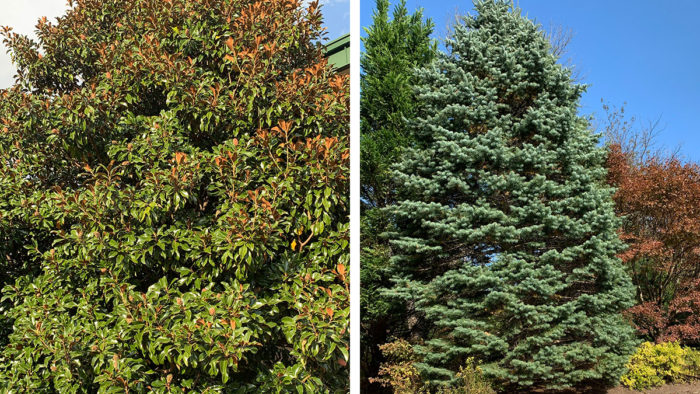
The holiday season is approaching, and now is the time to start decorating. Red and green are the typical colors we gravitate toward, but nontraditional colors mixed in with some typical evergreen textures may surprise you. Sure, you could go out and spend money on expensive greens that have been cut weeks ago. But better yet, start decorating with clippings that you may not find in the garden center. Here are a few plants that make excellent greens for winter displays. They are great to grow in the Mid-Atlantic and may add something a little different to holiday displays than the average greens do.
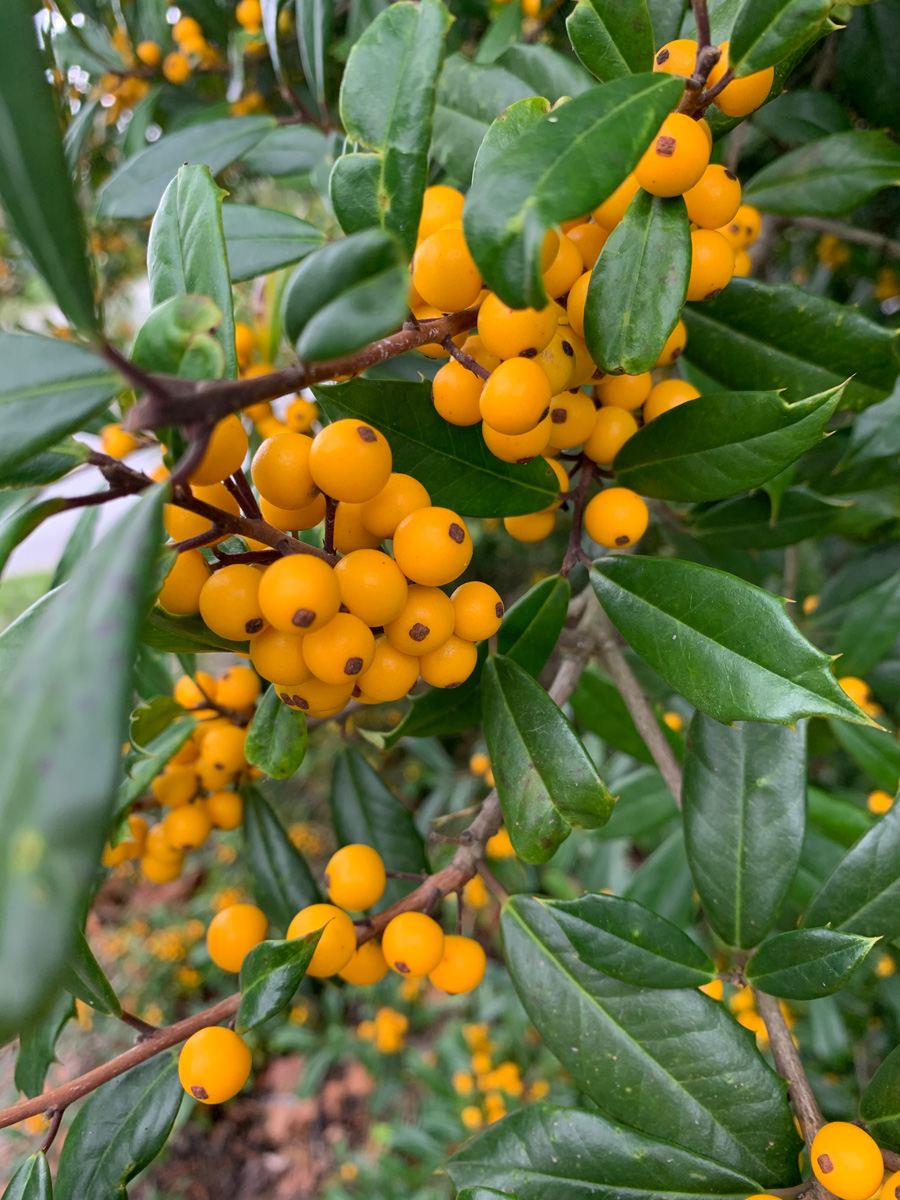
‘Longwood Gold’ Foster’s Holly
Ilex × attenuata ‘Longwood Gold’, Zones 6–9
Although holly (Ilex spp. and cvs., Zones 5–9) is synonymous with the holidays and carols are sung all season long about this famous winter plant, ‘Longwood Gold’ is not the typical holly. The most interesting feature is its fruit color. This holly is a hybrid of two North American native hollies, dahoon holly (I. cassine, Zones 7–11) and American holly (I. opaca, Zones 5–9). ‘Longwood Gold’ bears dark green, often narrow foliage and bright golden drupes. It grows to about 30 feet tall and 15 feet wide and will grow in sun to partial shade. So if you are considering planting an American holly, consider a ‘Longwood Gold’ Foster’s holly instead. Remember, as with most hollies, there must be a male holly nearby to pollinate. A male American holly will do the trick.
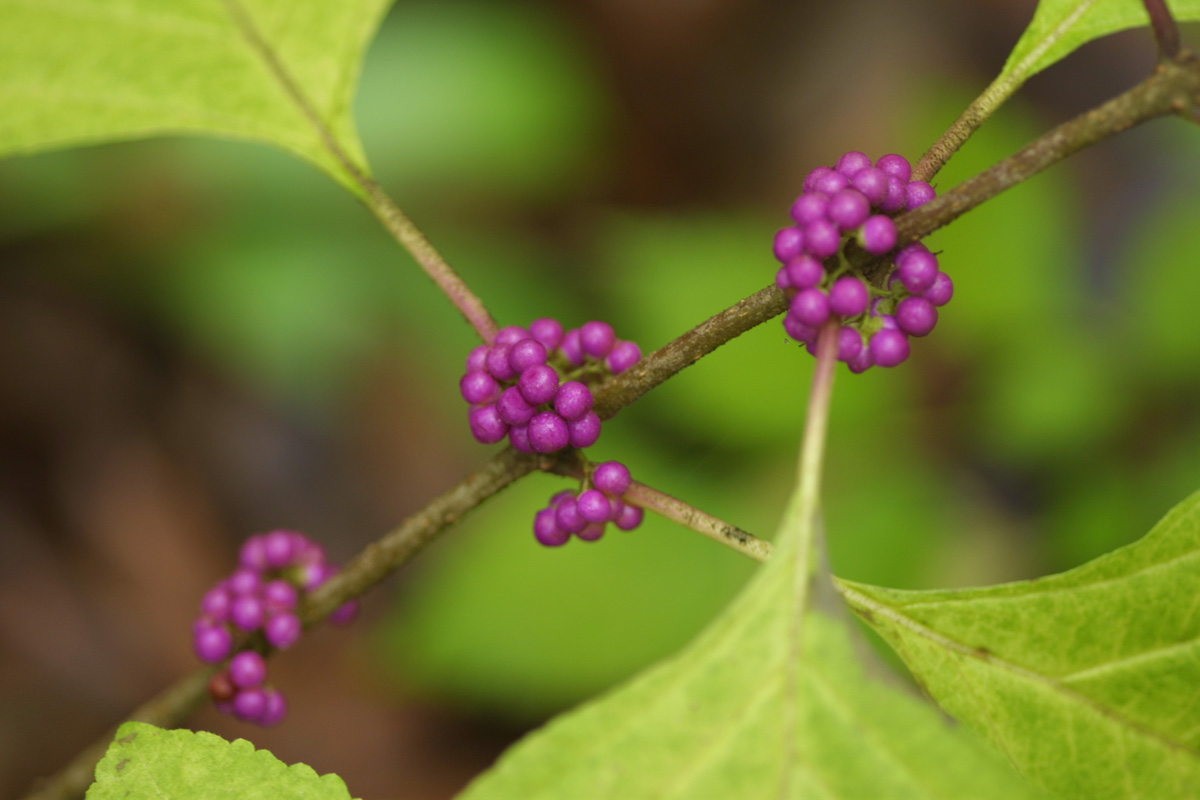
American beautyberry
Callicarpa americana, Zones 6–10
When using fruit in arrangements and wreaths, we tend to grab boughs of winterberry holly (I. verticillata, Zones 3–9) for its bright red, berry-adorned branches. However, there is another native out there that can elevate your décor while adding a boost of color. The purple, jewel-like fruit of American beautyberry may not be the green or red we typically rely upon, but a cut branch combined with a chartreuse green like golden Hinoki false cypress (Chaemacyparis obtusa ‘Cripsii’, Zones 4–8) and a fir (Abies spp. and cvs., Zones 3–8) or pine (Pinus spp. and cvs., Zones 2–9) bough will still send out holiday vibes. This shrub grows to about 3 to 5 feet high and wide and does best in moist soil. Plant it in a spot with full sun to partial shade.
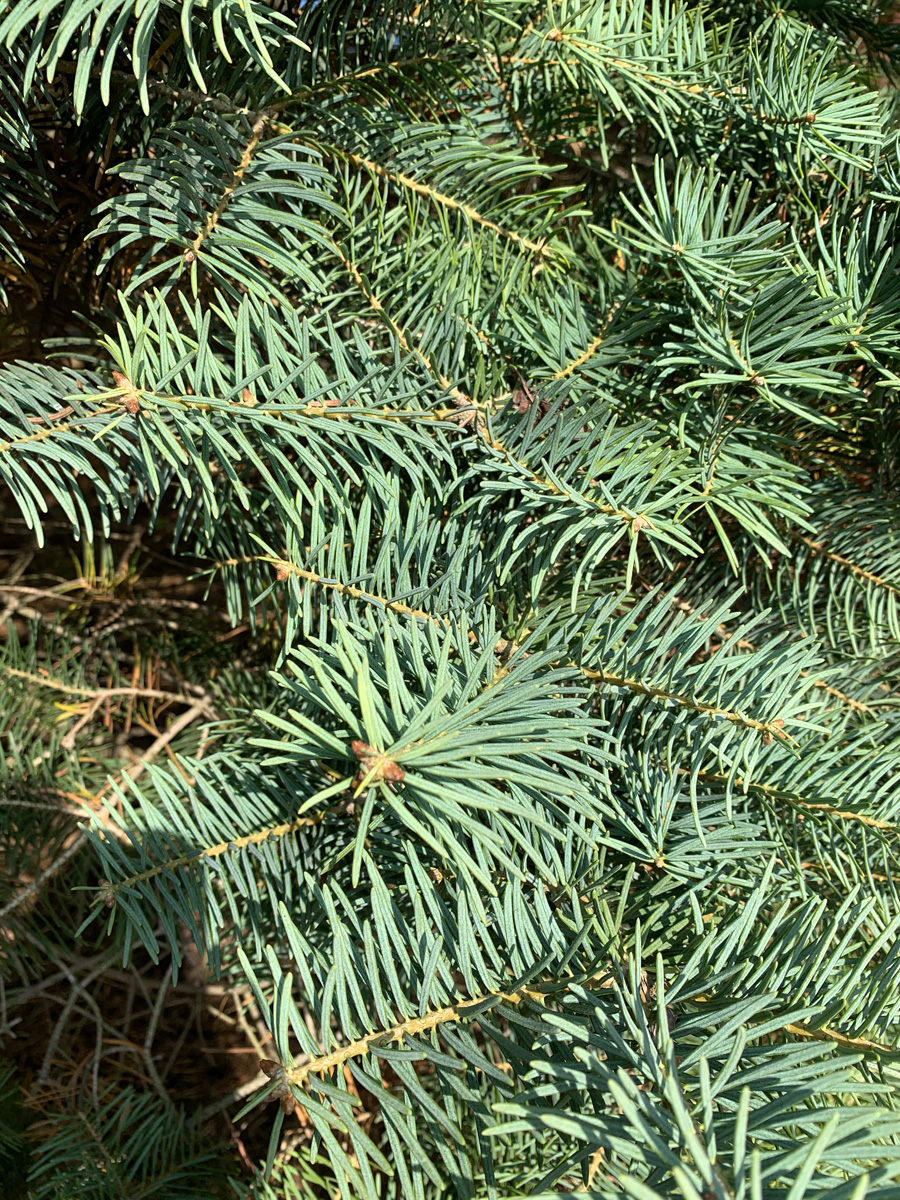
Concolor fir
Abies concolor, Zones 3–7
While concolor fir is native to the western half of the United States, it is still worth growing in the Mid-Atlantic. Reaching about 40 to 70 feet in height, this fir is a wonderful addition to the garden for cut greens. Plant it in a full sun to partial shade site with well-drained soil. Gravelly or sandy soil with a slightly lower pH is best. Since this fir prefers more acidic soil than most conifers, a soil test may be worth getting if you are unsure of your soil properties. Gorgeous, long, bluish silver needles are the best feature of this tree. The foliage is extremely soft and easy to work with, and the greens last all season and often beyond.
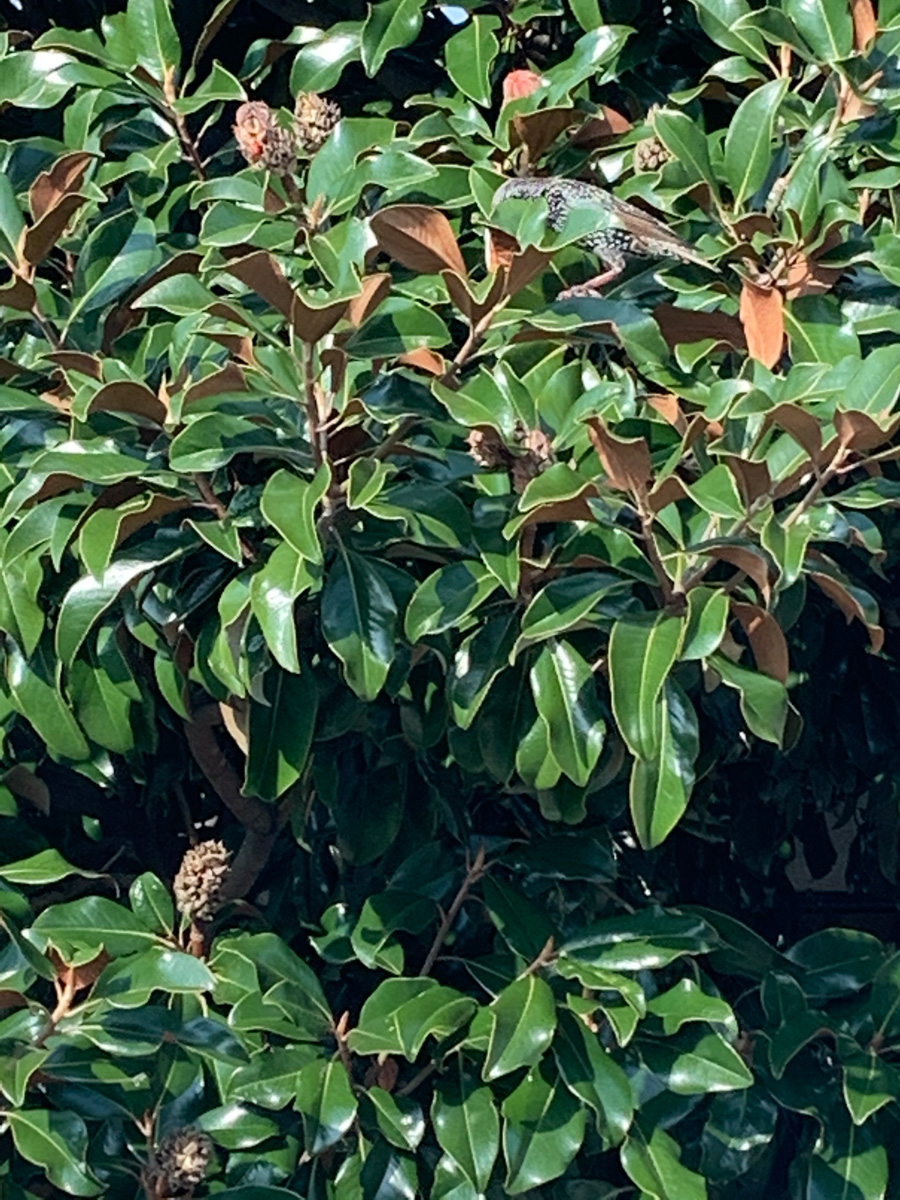
‘Bracken’s Brown Beauty’ Southern magnolia
Magnolia grandiflora ‘Bracken’s Brown Beauty’, Zones 5–9
This Southeast native provides a unique texture in winter containers and wreaths. Its glossy, deep green leaves provide a wonderful foundation for hand-tied wreaths, easily mixing with the textures and colors of other greens. This cultivar is a little smaller than the straight species but outcompetes the species as a better choice for holiday greens. Its shorter height (up to 30 feet tall) allows it to fit in smaller spaces. Its dense foliage is much better suited to cutting than the straight species because the leaves are half the width. It also has better cold tolerance and can withstand a slightly less protected site. However, it still needs full sun to partial shade and rich, well-drained soil.
While there are so many plants to use for winter displays, think outside the box for winter greens. Plants with untraditional winter interest will inspire you to create out-of-the-ordinary wreaths and containers, and they will also look great in your garden.
—Michele Christiano has worked in public gardens for most of her career. She currently works as an estate gardener maintaining a Piet Oudolf garden.
Fine Gardening Recommended Products

VegTrug Classic Cold Frame
Fine Gardening receives a commission for items purchased through links on this site, including Amazon Associates and other affiliate advertising programs.

The Nature of Oaks: The Rich Ecology of Our Most Essential Native Trees
Fine Gardening receives a commission for items purchased through links on this site, including Amazon Associates and other affiliate advertising programs.



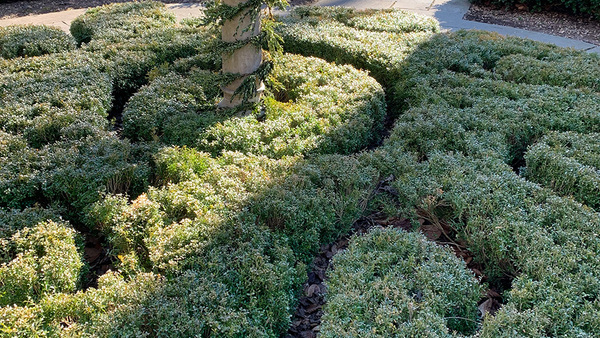
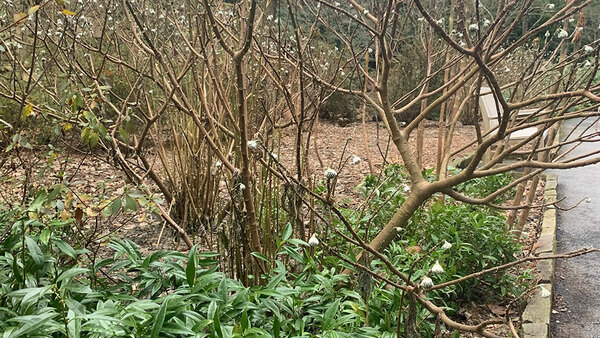














Comments
Log in or create an account to post a comment.
Sign up Log in